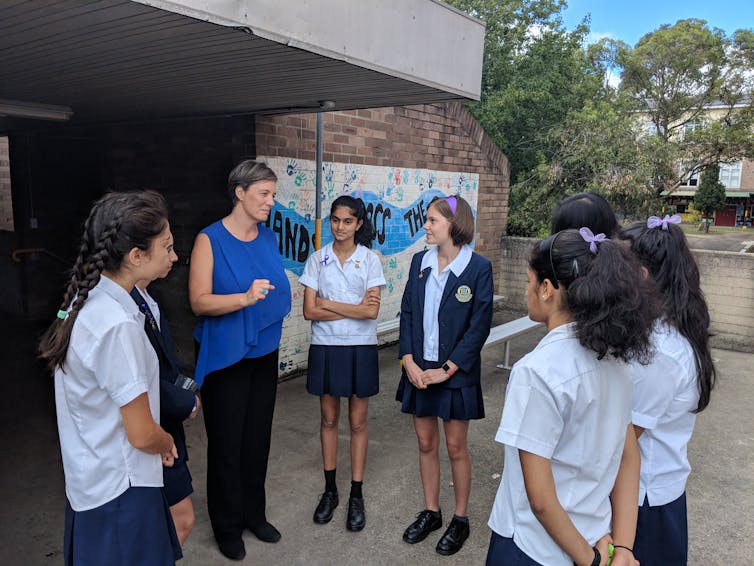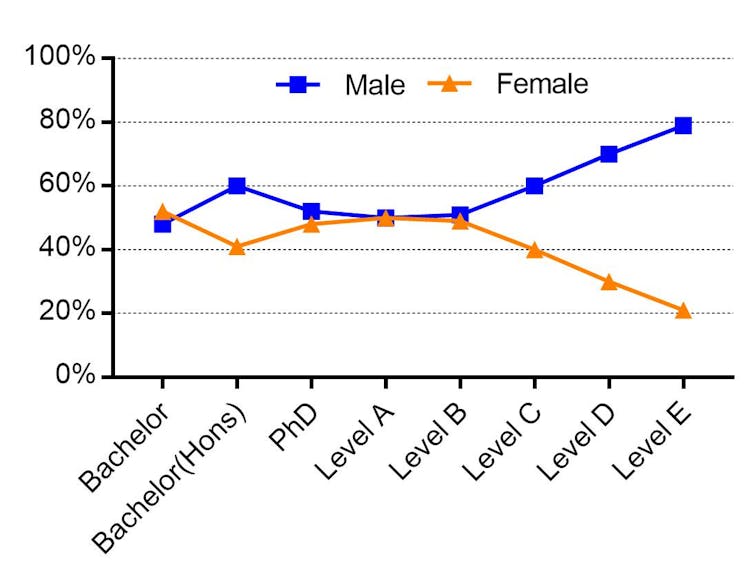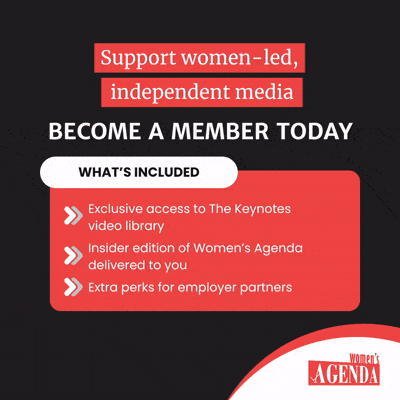In this piece cross published from The Conversation, Amy L Heffernan, Kate Umbers, and Sanam Mustafa, share what really need from such a position.
Appointing a ‘Women in Science ambassador’ sounds like a good idea – but talking to teens is not enough.
We argue that an ambassador needs to do more than just encourage interest. Such a person should address structure and culture, and remove barriers that impede women’s progress in science and technology, which are still in place even in 2018. That person should also promote existing role models across science, technology, engineering, maths and medicine (STEMM).
Few women at the top
Women remain poorly represented in STEMM – just 16% of top-level science and technology researchers and professionals are women.
Australia’s higher education and research institutions have a “leaky pipeline” in STEMM. More than half of all undergraduate and PhD students are women, and around 50% of junior science lecturers are women.
However, by the time women reach Senior Lecturer (roughly equivalent to a middle management position), this percentage falls dramatically, resulting in just 21% of professorial positions (senior management) held by women.
But why this marked difference in the fate of men and women in STEMM?
One might think the difference in gender representation can be explained by women choosing family over a career. But it’s not all down to having and caring for children. Relative to men, women without children have similar disparity in career progression to women with children. So what is the true cause?

Dr Nicky Ringland, Author provided
Structure and culture
Until the mid-late nineteenth century women were unwelcome at universities, and not allowed to study subjects or work in fields like maths and physics, which were reserved exclusively for men. The legacy of this deliberately biased beginning is alive and well in the structure and culture of modern STEMM disciplines.
The short-termism in STEMM job contracts – highlighted by Professor Emma Johnston, President of Science Technology Australia, in her National Press Club address – and the expectation that researchers are highly mobile and able to relocate anywhere in the world is based on the traditional “male breadwinner” model. According to this model, a man’s family will follow him to a job.
The pressure to consistently produce research publications, attend conferences, mentor students, and work increasingly long overtime hours is not amenable to people in caring roles, which are most often taken up by women. Consequently women are excluded from critical networking opportunities and have reduced research output, resulting in competitive disadvantage.
In addition, sexual harassment, assault, non-inclusive behaviour, and unchecked unconscious bias in hiring and promotion practices remain common.
We argue that an effort to get girls and women interested in STEMM is misplaced – they are already naturally interested. Rather than attracting more girls and women into STEMM, or focusing on initiatives that “fix” women so they are forced to adapt to the existing model, we have other ideas.
Our new ambassador for women in science needs to promote social and cultural change to ensure it is equally possible for women and men to succeed.

Here are five areas in which an ambassador for women in science could make a real impact on the current and future careers of Australian women in STEMM disciplines:
1. Promote role models
Visibility matters in achieving equality – you cannot be what you cannot see. A recent study of 11,000 high school students across Europe found that most girls become interested in STEMM under the age of 11, but that their interest wanes by 15. The lack of visible and accessible role models was identified as a key factor that influenced the girls in the study.
Girls need to see STEMM as a viable career option for themselves, and have access to authentic, honest, diverse and relatable role models. Responsibility lies with the government and media to ensure the voices of diverse women in STEMM are heard, and in science itself for supporting women within the system.
Science and Technology Australia’s Superstars of STEM program was designed to help address this.
2. Take a discipline-by-discipline approach
Across STEMM disciplines, there is enormous variation in the point at which gender inequity strikes. For example, 72% of of medical and health science graduates are women, suggesting that feeding more women into the pipeline will have minimal influence on numbers at senior levels.
On the other hand, women in engineering and physics make up only around 15% of graduates, and there is a clear need for encouraging more young women to pursue these paths if we are to reach true gender equity.
Evidence from China, Malaysia and the former Soviet Union proves that this is possible in a conducive cultural environment.
3. Engage senior men
Up to 80% of the individuals in positions of power in STEMM disciplines are men.
To accelerate cultural change, we need to mobilise a great proportion of these men to recognise the barriers facing women in STEMM, recruit their peers to the cause, and lead by example to facilitate and enact positive reform.
One such example is the Male Champions of Change program, which could be expanded to see continual recruitment of new champions, use of concrete diversity targets, and compulsory reporting of outcomes to measure success.
4. Be a watchdog
We need the ambassador for women in science to act as or appoint an independent ombudsman for confidential complaints of sexual harassment, assault and bullying in STEMM.
Institutes and universities often fail survivors – the reasons are complex, but one factor is because they have a vested interest in protecting their reputation. An independent ombudsman bypasses this conflict, and creates an avenue for reporting abuse without fear of reprisal.
It is essential that the new ambassador has the agency to directly enact change and to force compliance by guilty parties when necessary – for example, by withholding funding, barring access on campus, or instigating disciplinary action, including termination of employment.
5. Advocate for carers
In STEMM, grants, promotions and award systems all depend on research output – and this can be significantly interrupted by caring duties.
In general, women are the primary caregivers for children and shoulder 71% of the responsibility for informal care of family and friends with disabilities, mental illness, chronic conditions or terminal illness.
The ambassador for women in science needs to advocate for national guidelines that support carers. The guidelines must include support for the maintenance of research momentum while on leave and when returning from leave, the right to pause fixed term contracts during career breaks, and that these be adjusted to part-time work. We need tailored guidelines for measuring research output from people who have taken career breaks.
Although women take on the bulk of caring responsibilities, it is essential to promote and encourage schemes and attitudes that are neutral to the gender of the carer to ensure everyone can share these important roles.
Why is gender equity in STEMM a worthwhile pursuit? For the same reason that diversity of all kinds is to be promoted and celebrated. The great global humanitarian and environmental problems of our time have solutions in STEMM, and STEMM practitioners are the world’s problem solvers. Diversity brings unique perspectives to STEMM, increasing the probability of creative, innovative solutions to the world’s grand challenges.
About the authors Amy L Heffernan, Postdoctoral Research Fellow, University of Melbourne; Kate Umbers, Lecturer in Zoology, Western Sydney University, and Sanam Mustafa, ARC Research Associate (Molecular Pharmacologist), University of Adelaide. This article was originally published on The Conversation. Read the original article.
Pictured above: Computer scientist and Computing Education Specialist Dr Nicky Ringland meets with Burwood Girls students. Nicky Ringland, Author provided


